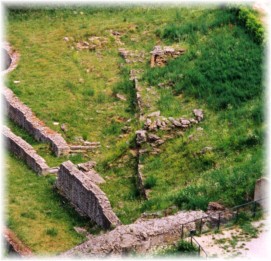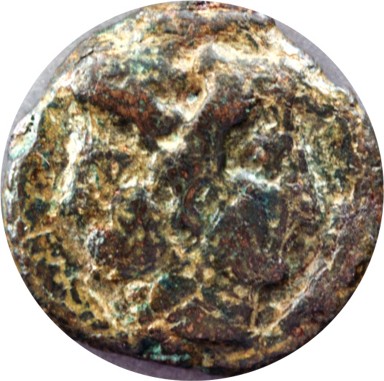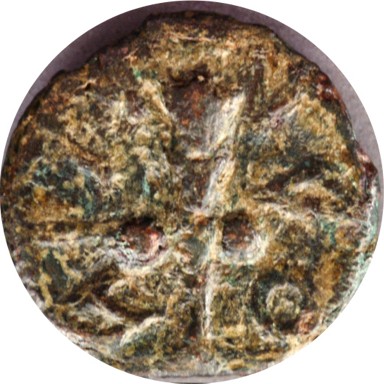VOLTERRA:
Its Wonders of Etruscan Architecture
and the Aes Grave Sextans


Fourth Century BCE Etruscan Arch (top) displaying busts of the Gods Uni, Tania and Menrva. The ancient arch of Volaterrae leads to a complex of Roman ruins and the remains of an early Etruscan Temple (photo below arch).

Bronze, Aes Grave Sextans, 230-220 BCE. Obverse: Janiform head, wearing petasos.

Reverse: FELAODI, club and two pellets. [Thurlow-Vecchi 90]
Q: Is Aes Grave coinage unique to Etruria?
A: No. By the 3rd C. BCE, many Italian mints were producing cast bronze coinage. Rome was the inspiration and, therefore, Volaterrae's Aes Grave issue may be regarded as derivative from Roman practice. [Crawford, Coinage and Money Under the Roman Republic, 1985, p.43]